Coding real-time Graphs with PuppyGraph
This guide walks you through building a real-time graph visualization of cloud infrastructure using PuppyGraph and yFiles. You'll learn how to deploy a local PuppyGraph instance, prepare and import relational data from Iceberg tables, and transform it into an interactive, filterable diagram. With yFiles’ powerful layout and filtering capabilities, you'll uncover critical insights like identifying users with admin-level access to internet gateways — a key step in visualizing potential security vulnerabilities in your cloud environment.
Querying relational data as a graph with PuppyGraph
One of the most powerful use cases for graph analytics is cloud security. In this example, we’ll use PuppyGraph and yFiles to build and visualize a cloud security graph. Specifically, tracing which entry points could be vulnerable to a cybersecurity attack.
For this demonstration, PuppyGraph will be running graph queries directly from data in an Iceberg table. Then, yFiles will render the query data into a graph visualization where analysts can explore service paths and user actions.
You can find everything you need in the GitHub repo, including setup instructions, sample datasets, and a deeper dive into this use case in our detailed blog post.

We´d love to help you. Reach out and we'll get in touch with you.
Your message has been sent.
How to deploy and query PuppyGraph data for graph visualizations with yFiles
1. Prerequisites
We'll need several things for this tutorial:
- Docker and Docker Compose
- Python 3
- yFiles for HTML
- Cloud security dataset
PuppyGraph can be deployed via Docker or an AWS AMI through AWS Marketplace. We'll be launching a PuppyGraph instance on Docker for this demo.
2. Start a PuppyGraph instance
After cloning the repository onto your local machine, you can navigate to use-case-demos/cloud-security-graph-demo and run docker compose up -d to launch the container and other services. You should see the following appear on your terminal:
[+] Running 6/6
✔ Network puppy-iceberg Created
✔ Container minio Started
✔ Container mc Started
✔ Container iceberg-rest Started
✔ Container spark-iceberg Started
✔ Container puppygraph Started
You can open your browser and go to your instance's URL to access PuppyGraph's login screen. By default, this is localhost:8081.


Log in using the default credentials:
username: puppygraph
password: puppygraph123
Once we get the data loaded, we'll return to this screen to set up the schema (the blueprint for how the data is organized).
3. Prepare the data
We will first convert our csv data into Paraquet format via the python script. The Paraquet format is designed for efficient data storage and retrieval, making it perfect for graph querying.
To keep the demonstration self-contained, we recommend creating a virtual environment to activate and install the necessary packages.
python3 -m venv demo_venv
source demo_venv/bin/activate
pip install pandas pyarrowWe can then run the following command in the repository:
python3 CsvToParquet.py ./csv_data ./parquet_data4. Import data
Now that we have our data in the desired file format, we can begin to populate our Iceberg tables. First, start the Spark-SQL shell:
docker exec -it spark-iceberg spark-sqlYou should see the following shell prompt:
spark-sql ()>5. Load the graph schema
Going back to the PuppyGraph Web UI at http://localhost:8081 from when we set up the Docker, select Browse…, choose schema.json from the repository and then click Upload.
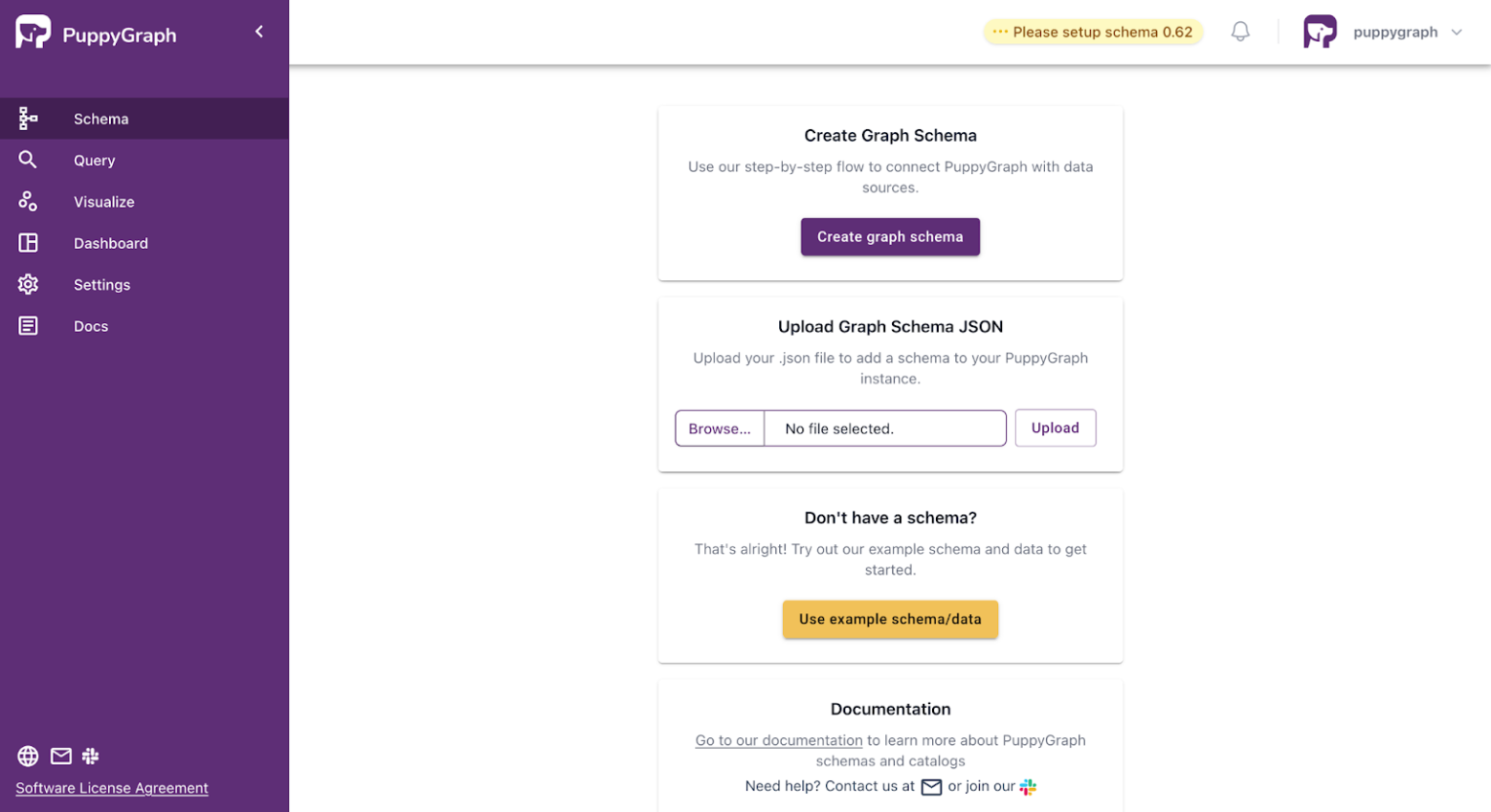
Alternatively, you can run the following command in your terminal:
curl -XPOST -H "content-type: application/json" --data-binary
@./schema.json --user "puppygraph:puppygraph123" localhost:8081/schemaWe can now query our relational data as a graph!
6. Visualize the graph
yFiles offers a free evaluation version of yFiles for HTML that we’ll be using for the rest of this post. For websites using HTML 2.5 and higher, yWorks has an app generator to quickly create a web app for visualization purposes, no coding experience required.
You also want the yFiles-for-HTML server from the yFiles-for-HTML folder up and running with npm run start so that the app generator can access the data we uploaded to our PuppyGraph instance.
Setting up yFiles for HTML
- Download the latest version of yFiles for HTML . You may need to sign up for a free evaluation license if you don't already have one.
- Extract the downloaded archive to a folder on your local machine.
- Open the
README.htmlorGettingStarted.htmlfile in the yFiles root directory to review the basics and requirements. - Install the project dependencies by running
npm installin the/lib-devfolder (requires Node.js and npm). - Start the yFiles development server with
npm run start. This makes the yFiles demo application available locally, usually athttp://localhost:3000/.
Our dataset contains quite a few kinds of vertices and edges, so we'll have to add those in. When making the visualizations, it's also possible to filter out certain information from view without needing to make an additional query. To demonstrate this, we'll only be looking at "User" and "InternetGateway" vertices, as well as the "ACCESS" edges. This will let us focus on which users have access to what internet gateways.

We have three Gremlin loaders to handle our nodes and edges. To simplify our graph, we only set two filters for nodes: “User” and “InternetGateway”, and one filter for edges: “ACCESS”. This means our graph will only focus on displaying these two kinds of nodes. We’ll only need three label configuration blocks to display the ids of our nodes and edges. The app generator lets you select from five automatic layouts: hierarchical, organic, tree, circular and orthogonal. These dictate how nodes and edges are arranged in the graph. yWork’s documentation also provides a helpful guide for picking the best data visualization for your use cases, making it very easy to play around and find the best fit for your needs. For now, we’ll use the default Hierarchical layout. We can click on the blue play button to preview our app and generate the source code.
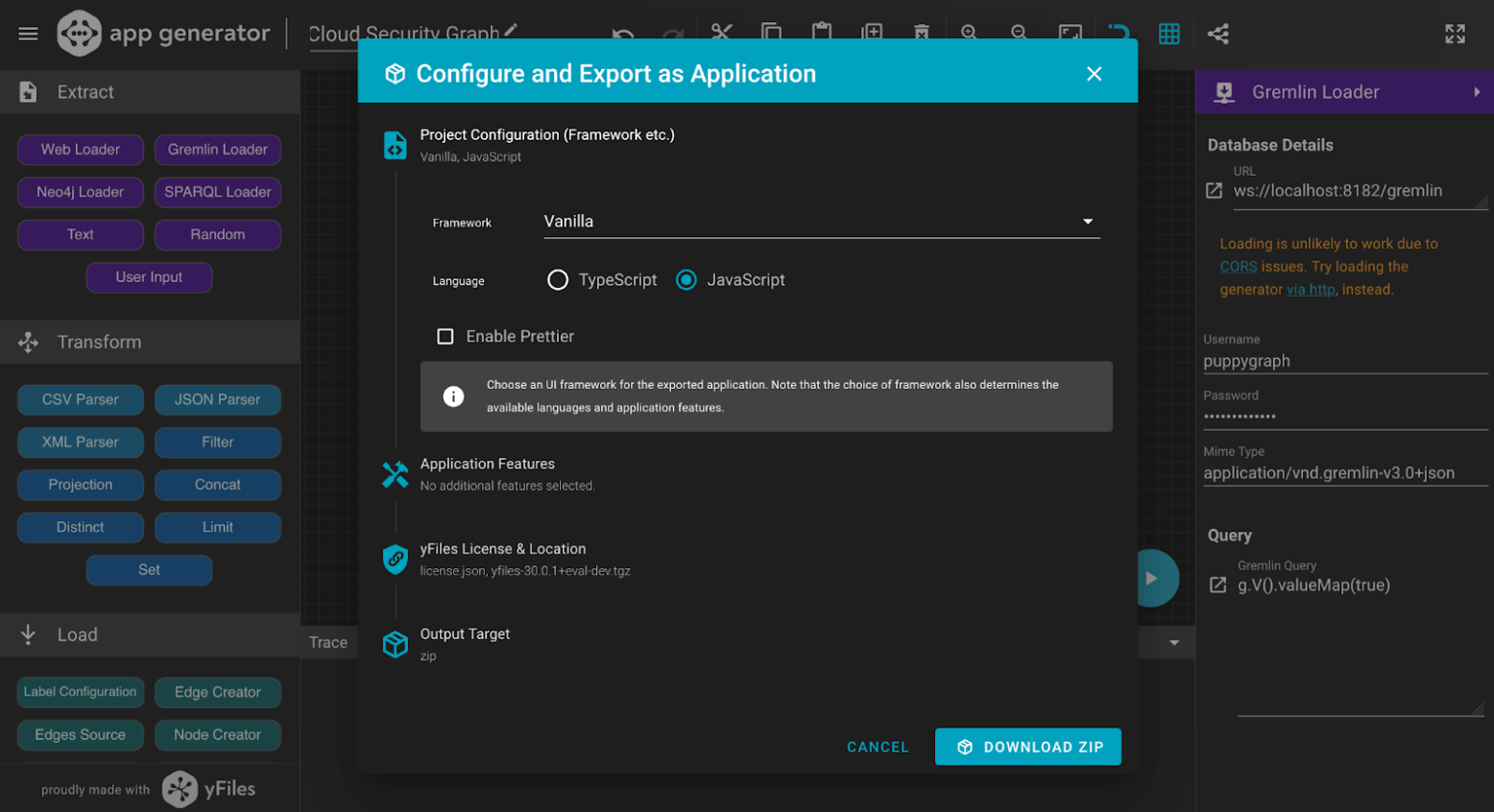
We can now unzip the folder and take a look. The code in src/lib/loadGraph.js should correspond with what we’ve created in the app generator:
export default async function loadGraph() {
const data = await runQuery({
query: 'g.V().valueMap(true)',
password: 'puppygraph123',
url: 'ws://localhost:8182/gremlin',
username: 'puppygraph',
mimeType: 'application/vnd.gremlin-v3.0+json',
})
const out = await project(data, { binding: (item) => item._items })
const out2 = await filter(out, {
expression: new Function(
"with(arguments[0]) { return (label === 'InternetGateway') }"
),
})
const labelConfiguration = await buildLabelConfiguration({
textBinding: (item) => item.id,
placement: () => 'bottom',
})
const nodeCreator = await buildNodeCreator([labelConfiguration], {
x: () => 0,
width: () => 120,
height: () => 80,
styleProvider: 'ShapeNodeStyle',
fill: () => 'lightpink',
shape: () => 'round-rectangle',
stroke: () => '2px #cc0055',
})
const labelConfiguration2 = await buildLabelConfiguration({
textBinding: (item) => item.id,
placement: () => 'bottom',
})
const nodeCreator2 = await buildNodeCreator([labelConfiguration2], {
x: () => 0,
width: () => 120,
height: () => 80,
styleProvider: 'ShapeNodeStyle',
fill: () => 'lightblue',
shape: () => 'round-rectangle',
stroke: () => '2px #0055cc',
})
const nodesSource = await buildNodesSourceData(
{ data: out2, nodeCreator: nodeCreator2 },
{ idProvider: (item) => item.id }
)
const labelConfiguration3 = await buildLabelConfiguration({
textBinding: (item) => item.label,
placement: () => 'center',
fill: () => 'gray',
})
const edgeCreator = await buildEdgeCreator([labelConfiguration3], {
stroke: () => '1px gray',
sourceArrow: () => 'none',
targetArrow: () => 'triangle',
})
const data2 = await runQuery({
query: 'g.E()',
password: '',
url: 'ws://localhost:8182/gremlin',
username: '',
mimeType: 'application/vnd.gremlin-v3.0+json',
})
const out3 = await project(data2, { binding: (item) => item._items })
const out4 = await filter(out3, {
expression: new Function(
"with(arguments[0]) { return (label === 'ACCESS') }"
),
})
const edgesSource = await buildEdgesSourceData(
{ data: out4, edgeCreator },
{
sourceIdProvider: (item) => item.outV.id,
targetIdProvider: (item) => item.inV.id,
}
)
const data3 = await runQuery({
query: 'g.V().valueMap(true)',
password: '',
url: 'ws://localhost:8182/gremlin',
username: '',
mimeType: 'application/vnd.gremlin-v3.0+json',
})
const out5 = await project(data3, { binding: (item) => item._items })
const out6 = await filter(out5, {
expression: new Function(
"with(arguments[0]) { return (label === 'User') }"
),
})
const nodesSource2 = await buildNodesSourceData(
{ data: out6, nodeCreator },
{ idProvider: (item) => item.id }
)
const graph = await buildGraph({
nodesSources: [nodesSource, nodesSource2],
edgesSources: [edgesSource],
})
const out7 = await arrange(graph, {
worker: false,
name: 'HierarchicalLayout',
properties: {
layoutOrientation: 'top-to-bottom',
edgeLabelPlacement: 'integrated',
nodeDistance: 10,
minimumLayerDistance: 20,
automaticEdgeGrouping: false,
},
})
return out7
}In the folder, run npm install and npm run dev, then head over to localhost:3000 to view the results:
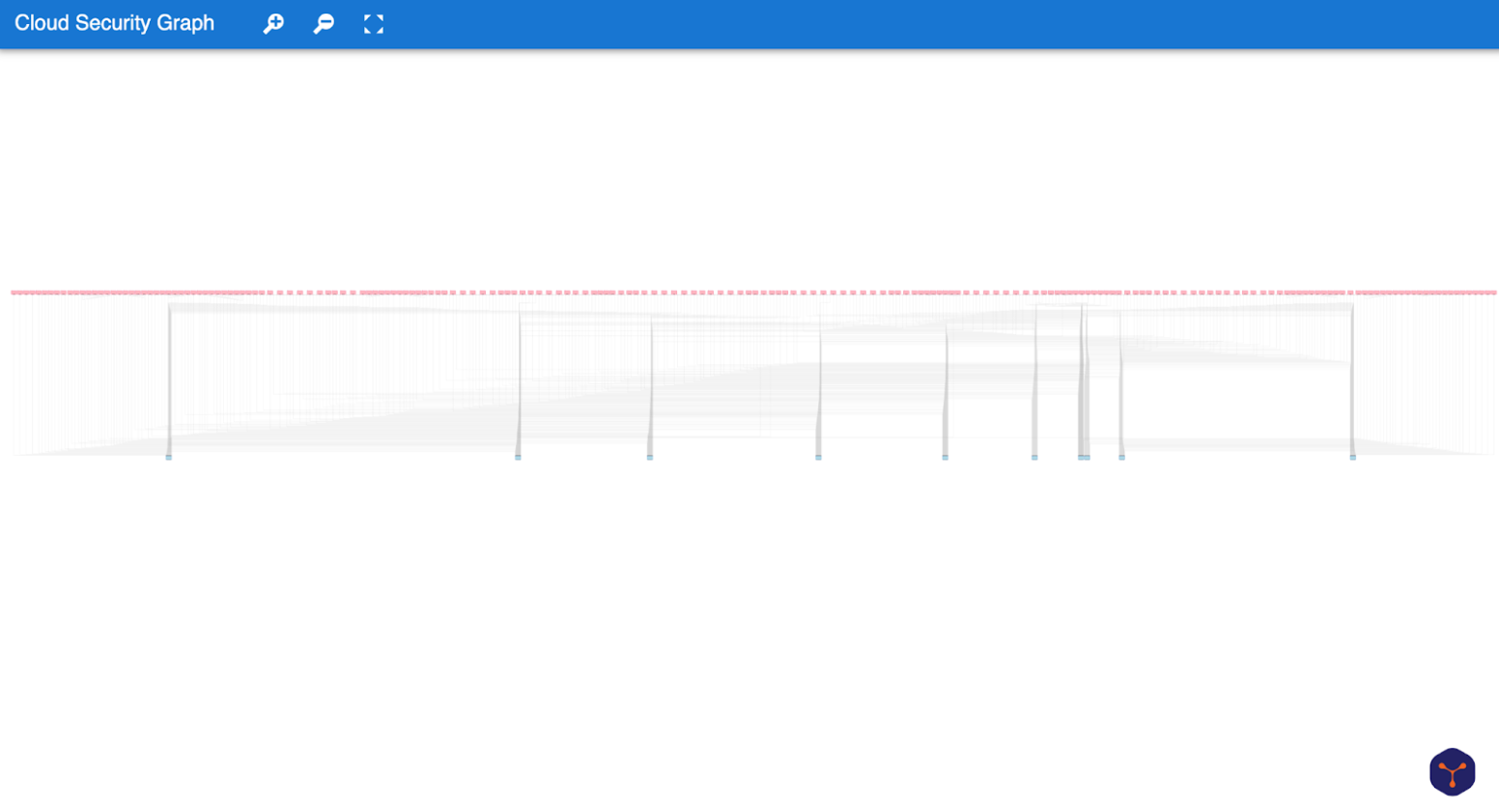
7. Filter for admin access
Narrowing the search
The graph looks impressive from afar, but what exactly are we trying to achieve? Currently, we're querying for everything with this command:
g.V().valueMap(true)That’s not very informative. Instead, we’ll frame our data to show which users have elevated privileges to these internet gateways, since they could serve as entry points for security attacks. We’ll look for users with admin privileges to internet gateways.
Query 1: Getting the relevant internet gateways
const data = await runQuery({
query: 'g.V().outE("ACCESS").has("access_level", "admin").inV().dedup()',
url: 'ws://localhost:8182/gremlin',
username: 'puppygraph',
password: 'puppygraph123',
mimeType: 'application/vnd.gremlin-v3.0+json'
})Query 2: Getting the edges
const data2 = await runQuery({
query: 'g.E()',
password: '',
url: 'ws://localhost:8182/gremlin',
username: '',
mimeType: 'application/vnd.gremlin-v3.0+json',
})Query 3: Getting the users
const data3 = await runQuery({
query: 'g.V().hasLabel("User")',
url: 'ws://localhost:8182/gremlin',
username: 'puppygraph',
password: 'puppygraph123',
mimeType: 'application/vnd.gremlin-v3.0+json'
})If all works well, we should get the following webview:
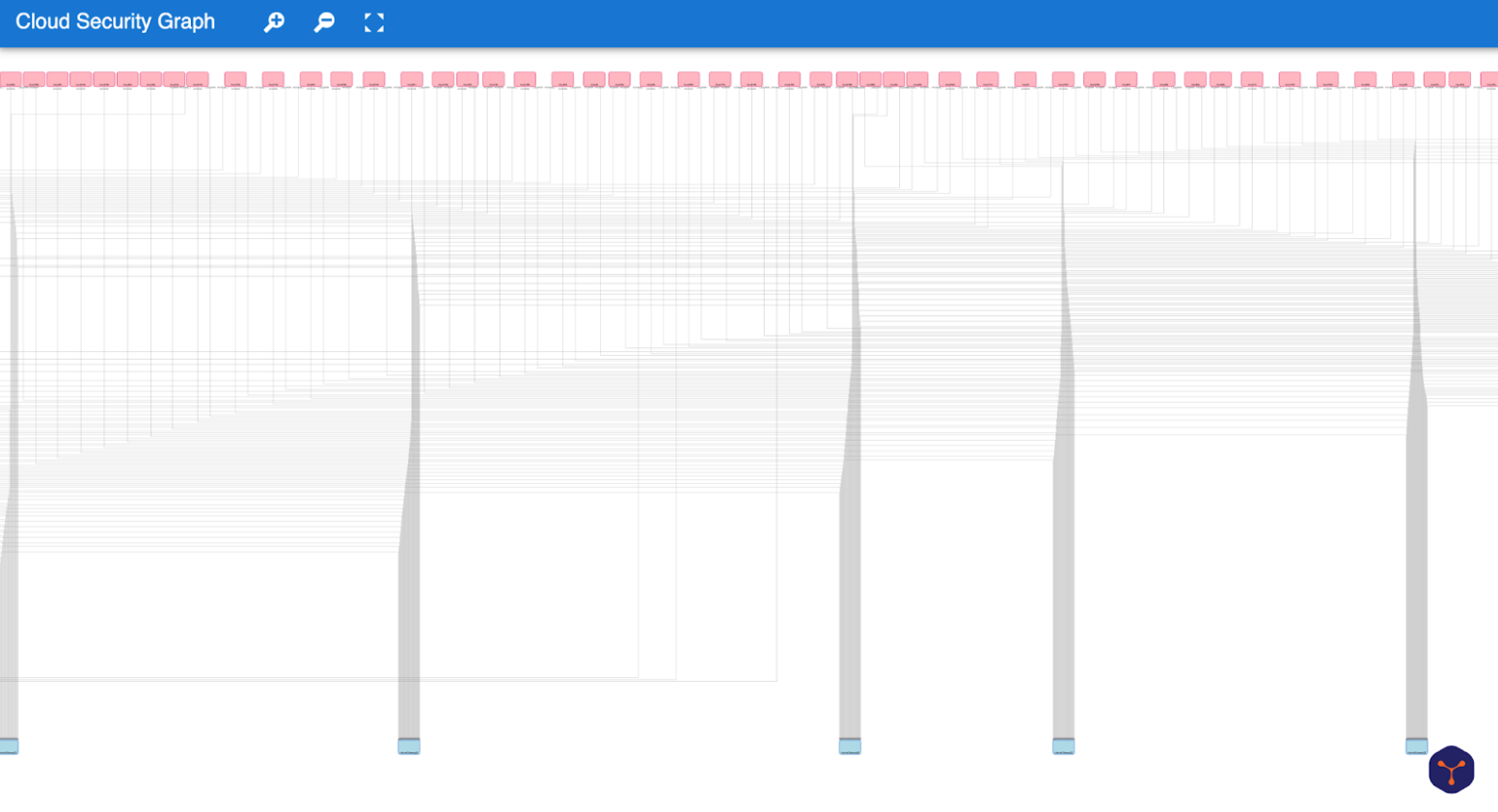
The hierarchical layout is a more specific form of tree layouts that focuses on the flow within a directed graph. Since there is a clear direction from users to internet gateways, the hierarchical layout makes it easy to see the number of incoming connections to each internet gateway, which could be helpful for spotting overloaded gateways or unusual traffic patterns. However, while we can quickly observe how many users are connected, it’s harder to tell exactly which users are connected.
8. Optimize the layout
Let’s change the arrangement of the graph in src/lib/loadGraph.js:
const out7 = await arrange(graph, {
worker: false,
name: 'OrganicLayout',
properties: {
defaultPreferredEdgeLength: 40,
defaultMinimumNodeDistance: 30,
compactnessFactor: 0.5,
gridColumns: undefined,
gridRows: undefined,
},
})This gets us a graph using the Organic Layout:
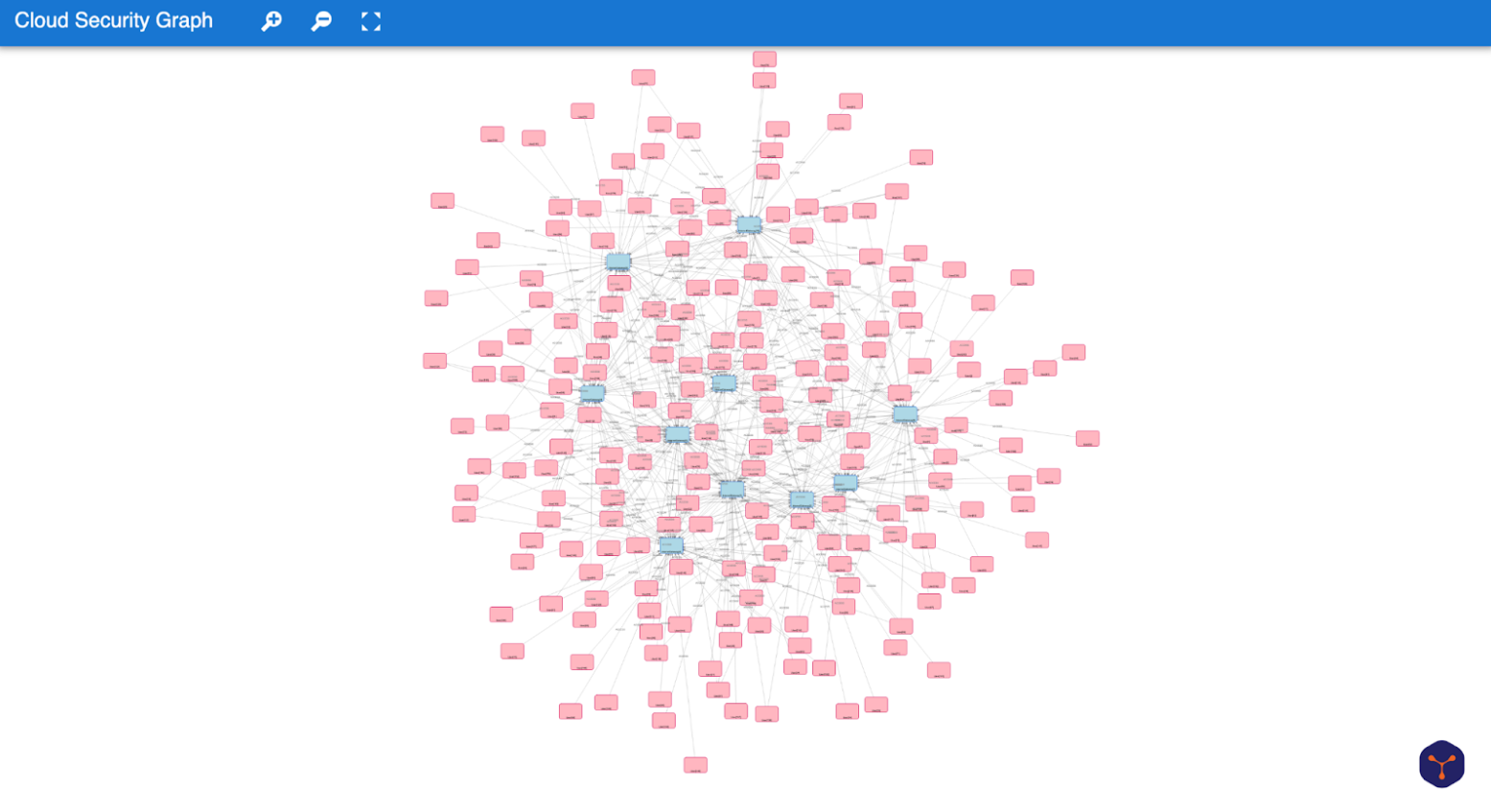
The Organic Layout is based on a force-directed approach, where connected nodes attract and unconnected nodes repel. This allows related nodes to naturally group together, making it easier to spot clusters within the data. We can see that our users form clusters around the internet gateways that they have access to, providing more focus on the users themselves. In this case, the organic layout seems to better fit with our use case of identifying users with elevated access privileges. Of course, discovering the perfect data visualization doesn’t end here, but it is a good starting point.
Coding recap
In this example, we explored how to build real-time graph visualizations using PuppyGraph and yFiles. We started by selecting the best data visualization layout for our use case and configured our graph with PuppyGraph data. After previewing the application in the yWorks App Generator, we exported the generated code and examined the main source file to see how the data was loaded and visualized. This process provided a practical introduction to customizing layouts and working with real-time graph data in an interactive environment.



